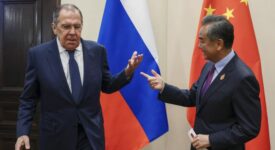The European Union and Japan launched the EU-Japan Partnership on Sustainable Connectivity and Quality Infrastructure on 27 September 2019. The two partners vowed to cooperate based on ‘sustainability as a shared value, quality infrastructure and their belief in the benefits of a level playing field’. Now, the challenge is to teeth these paper tigers.
The EU-Japan Connectivity Partnership follows logically from the value propositions that both sides presented in contrast to China’s Belt and Road Initiative (BRI). In a thinly veiled reference to BRI modalities perceived as problematic, Tokyo labeled its proposition ‘partnership for quality infrastructure’ in 2015. Its initially bilateral project-based approach now also involves a multilateral effort to promote quality infrastructure – for example in the G7 and G20. Thus, the EU’s ‘Europe–Asia Connectivity Strategy’ of 2018 aims to promote investments that are sustainable, comprehensive and rules-based. That means commercially viable and transparent, guaranteeing a level-playing field for businesses, respectful of labor rights and environmental standards, and not creating financial dependencies.
There are signs that the normative approach of the European Union and Japan is not without effect. The Chinese government is starting to speak about ‘high quality’ and ‘sustainable’ connectivity. While ‘high quality’ did not appear even once in Chinese President Xi Jinping’s keynote address at the first Belt and Road Forum in 2017, he mentioned it six times at the second forum April 2019. That same month, China’s Ministry of Finance announced the ‘Debt Sustainability Framework for Participating Countries of the BRI’. Clearly, the Chinese government does respond to accusations of creating debt traps and lack of transparency, against a background of deepening US-China trade frictions. The question now is to what extent rhetoric will be matched by real change on the ground.
This requires that the EU and Japan are more specific about where activities and approaches may align and where they do not. The connectivity partnership should help facilitate this. But real cooperation on connectivity between the EU and Japan remains a challenge. By and large – and with Japan as the positive exception – ‘likeminded’ actors are yet to add real projects and funds to their proposed initiatives. There is no consensus on how to build synergies between their connectivity propositions, which now run in parallel at best and at cross-purposes at worst. And substantive engagement with one another’s strategic thought remains scant. The Trump administration’s confrontational approach, even towards likeminded countries, and its noncommittal attitude towards Asia on global trade multilateralism are creating more obstacles.
Lacking new funds and tools, the EU is hard-pressed to deliver on its strategy beyond its normative elements. The focus has been on inclusive multilateralism and mapping connectivity, especially in the Asia–Europe Meeting that also includes China. Knowing that new funds will become available only in 2021 with the new Multiannual Financial Framework, the EU is focusing on empowering key actors including the EIB. While Japan has infrastructure partnerships with the United States, Australia, and India already in place, the EU is now attempting to build connectivity partnerships with these same partners as well as South Korea. But the EU and Japan would do well to jointly invest in conditional cooperation with China. This involves best and worst practices exchanges for implementing the memorandums of understanding for third-party market cooperation that Japan and several EU member states signed with China.
Geographically, it makes sense for the EU and Japan to focus on the regions where they have the biggest political, economic and strategic stakes as well as a strong presence and historical memory. The Connectivity Partnership specifically mentions the Western Balkans, Eastern Europe, Central Asia, the Indo-Pacific and Africa. So, in implementing the connectivity partnership, why not push for an ‘Open and Connected Ring around Europe’ (OCRE)? This may be promoted as the other side of the coin of the ‘Free and Open Indo-Pacific’ championed by Japan and the United States.
Thematically, digital connectivity rightly stands out as the preferred field of cooperation. The Connectivity Partnership mentions both the practical side of digital connectivity as an enabler of inclusive growth, and the regulatory and data security side, with a focus on the ‘Data Free Flow with Trust’ and international rule-making on trade-related aspects of e-commerce. This should bring both partners to also coordinate on the ‘defensive strand’ of connectivity. European governments lag in this field – they were slow to discuss the security of next-generation telecommunications infrastructure and the role of China’s equipment provider Huawei. Only under intense pressure from Washington did an EU coordinated risk assessment for the cyber-security of 5G networks come out in October 2019. But Germany seems intent on continuing its haphazard approach. There is a need to acknowledge the risks of connectivity and develop a new regime for export controls on emerging technologies.
As connectivity is quietly becoming the ‘next great game’, the European Union and Japan are now pursuing their interest in managing the simmering connectivity conflict. 2019 has been a year of many highs in the EU-Japan relationship. The newly agreed on EU–Japan Connectivity Partnership has the right ingredients. Now, the challenge is to add substance to those words. The proof is in the pudding – and in the field of connectivity, that means real projects and genuine exchanges on strategic thought.
‚Empowering the EU-Japan Connectivity Partnership‘ – Opinion by Maaike Okano-Heijmans – Clingendael / The Netherlands Institute of International Relations.







